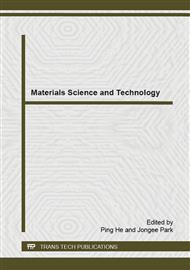p.71
p.77
p.83
p.89
p.95
p.103
p.108
p.115
p.120
Shrinkage Behavior of Composite Geopolymer Mortar Cured at Different Relative Humidities
Abstract:
In this study, the slag and metakaolin which contain rich elements of silica and aluminium were used to manufacture three types of composite geopolymer mortar: Type A (100% slag), Type B(70% slagand 30% metakaolin) and Type C(30% slag and70% metakaolin). Both the sodium hydroxide and sodium silicate solution were used as the activators. Experimental parameters included three ratios of SiO2/Na2O of 0.6, 0.7 and 0.8, three concentrations of alkali activator (7, 9 and 15%) and three water-to-solid ratios (0.33, 0.45 and 0.55), and four volumetric ratios of fine aggregate to whole mortar of 0, 10, 30, 50%, respectively. Two curing conditions of 50% relative humidity (RH), 25±2°C and 75% RH, 25±2°C were used for the dry shrinkage test. The results of study show that, at age of 28 days, the Type Bgeopolymer had the lowest drying shrinkage in the range between 450 and 760microstrains at 50%RH, and decreased to values between 270 and 340microstrainsat 70% RH.The average compressive strength of 89.3 MPa at age of 28 days for geopolymer mortar without metakaolin decreases to 74.7 MPa and 49.6 MPafor those with added metakaolin by 30 wt% to 70 wt%, respectively.
Info:
Periodical:
Pages:
95-100
Citation:
Online since:
December 2014
Authors:
Keywords:
Price:
Сopyright:
© 2015 Trans Tech Publications Ltd. All Rights Reserved
Share:
Citation:


